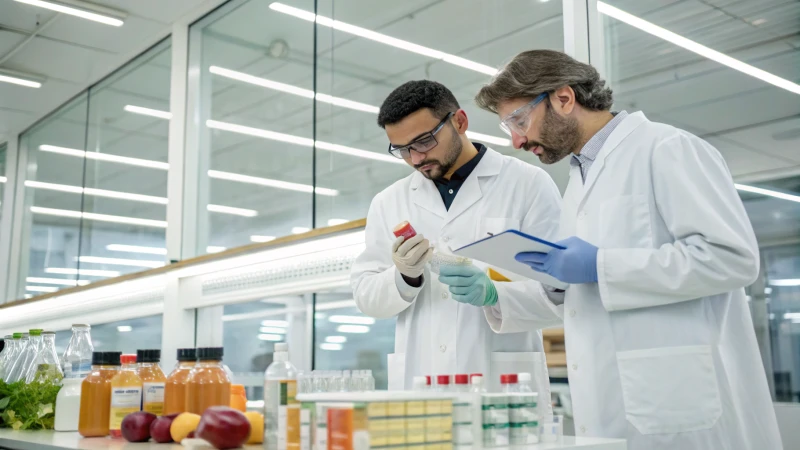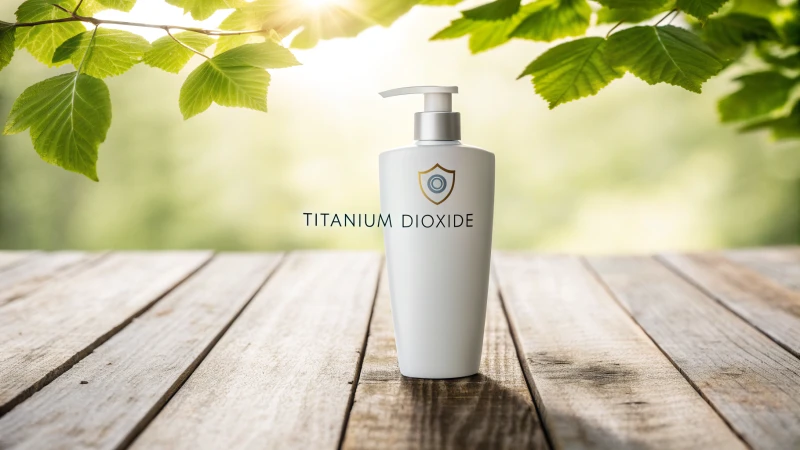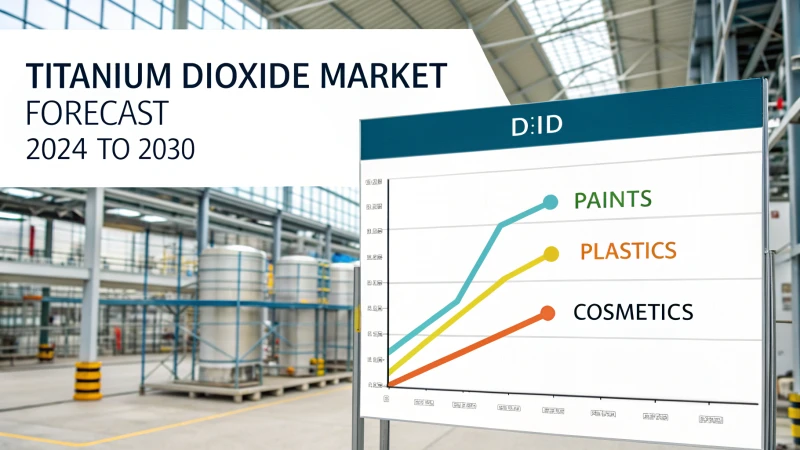
I remember the first time I heard about titanium dioxide—it was everywhere! From paint to sunscreen, it’s in so many products. But with health concerns on the rise, I wondered: can we really do without it?
Removing titanium dioxide from products is tough because it plays a key role in making them bright and opaque. While we can try using alternatives, it’s not as simple as it sounds—there are often trade-offs in cost and performance.
Thinking about just pulling TiO₂ out of a product seems straightforward at first, right? But, like most things in life, it’s a bit more complicated than that. From finding the right substitutes to balancing costs and performance, there’s a lot to consider. Let’s dive into why replacing TiO₂ isn’t as easy as we might hope.
[claim claim=”Titanium dioxide provides opacity and brightness.” istrue=”true” explanation=”TiO₂ is widely used in products for its ability to enhance brightness and opacity.”]
[claim claim=”Removing TiO₂ from products is simple and cost-effective.” istrue=”false” explanation=”Reformulating products without TiO₂ involves significant trade-offs in cost and performance.”]
Why is Titanium Dioxide So Widely Used Across Industries?
Have you ever wondered what makes titanium dioxide such a superstar in so many industries? I did too, and it turns out it’s all about its unique properties!
Titanium dioxide is widely used because of its high refractive index, which gives it incredible brightness and opacity. This makes it an essential ingredient in everything from paints and cosmetics to food, providing excellent coverage, sun protection, and whiteness.

The Optical Marvel: High Refractive Index
I remember the first time I learned about titanium dioxide’s high refractive index1. It was like discovering a secret superpower hidden within this compound. This ability to bend light so effectively is why it brings that brilliant finish and opacity to paints, plastics, and beyond.
Industries That Benefit:
| Industry | Application | Benefit |
|---|---|---|
| Paints & Coatings | White pigment for coverage | Superior hiding power |
| Cosmetics | Sunscreen and lotions | UV protection |
| Food Products | Whitening agent in confections | Uniform appearance |
Durability Under Various Conditions
Another fascinating aspect of titanium dioxide is its durability. I’ve seen firsthand how it withstands the elements—whether it’s the blazing sun or pouring rain, TiO₂ stands strong. This stability makes it perfect for outdoor use.
Environmental Resilience:
- UV Protection: In paints, it acts as a barrier against UV radiation.
- Weather Resistance: Ensures long-lasting coatings on buildings.
Safety Concerns and Alternatives
Despite its popularity, there are whispers of concern. Some studies suggest health risks when inhaled as nanoparticles. This naturally leads us to explore alternatives like calcium carbonate2 and engineered pigments.
Exploring Alternatives:
- Calcium Carbonate: Less effective in opacity but safer.
- Zinc Oxide: Used in sunscreens as a substitute for UV protection.
The Challenge of Replacement
Replacing TiO₂ isn’t a walk in the park. I’ve seen companies wrestle with reformulating products to maintain their edge while balancing cost and functionality.
Reformulation Considerations:
- Performance Trade-offs: Alternatives may not match the full spectrum of benefits provided by TiO₂.
- Cost Implications: New formulations can lead to increased production costs.
While titanium dioxide continues to play a vital role, ongoing research aims to address these safety concerns, finding new ways to deliver similar benefits without compromising health or performance.
[claim claim=”Titanium dioxide has a high refractive index.” istrue=”true” explanation=”TiO₂’s high refractive index allows it to bend light effectively.”]
[claim claim=”Calcium carbonate is a perfect substitute for titanium dioxide.” istrue=”false” explanation=”Calcium carbonate is less effective in opacity compared to TiO₂.”]
What Are the Viable Alternatives to Titanium Dioxide?
Navigating the world of alternatives to titanium dioxide is like being on a treasure hunt for that perfect balance of performance and safety.
Yes, there are viable alternatives to titanium dioxide, though they often come with trade-offs in performance and cost. Options like zinc oxide and calcium carbonate are being explored across various industries, each with its own set of benefits and limitations.

Exploring Alternative Pigments
Finding a substitute for titanium dioxide (TiO₂) requires understanding its unique attributes: high refractive index, brightness, and opacity. Alternatives must replicate these qualities to ensure product efficacy.
Paints and Coatings
In the paint industry, alternatives such as zinc oxide3 and calcium carbonate are being considered. These can provide opacity and brightness but often require higher quantities to match TiO₂’s coverage.
| Property | Titanium Dioxide | Zinc Oxide | Calcium Carbonate |
|---|---|---|---|
| Opacity | High | Medium | Low |
| Brightness | Excellent | Good | Fair |
| Cost | Moderate | High | Low |
Cosmetic Applications
In cosmetics, zinc oxide is like that multi-tool in your backpack—not only does it serve as a pigment, but it also offers UV protection4. Achieving the same silky texture that TiO₂ provides can be challenging.
- Texture: While TiO₂ delivers a smooth finish, its alternatives might need some tweaking to feel just right.
- Aesthetic: Getting that perfect whiteness level means a lot of adjustments, akin to getting the frosting just right on a cake.
Food Industry
For food products, calcium carbonate and rice starch offer potential. However, replicating the exact visual appeal of TiO₂ can be difficult.
- Appearance: Calcium carbonate gives a uniform look but may not achieve the stark whiteness of TiO₂.
- Mouthfeel: Rice starch might change the texture of foods, much like switching from whole milk to almond milk.
Regulatory and Safety Considerations
The scrutiny over nanoscale TiO₂ particles feels like revisiting safety protocols for an old favorite game. Alternatives must comply with stringent safety standards while keeping quality intact.
- Safety Profile: Rigorous testing is essential to ensure human safety.
- Compliance: Products must keep up with evolving regulations across different regions.
Innovation in Materials
The journey toward replacing titanium dioxide reminds me of how technology keeps bringing new gadgets into our lives. Emerging materials like engineered mineral blends aim to match performance, safety, and cost-effectiveness.
- Engineered Blends: New synthetic pigments promise enhanced performance5.
- Research and Development: Ongoing efforts focus on materials with minimal environmental impact and strong functional properties.
While replacing titanium dioxide is no small feat—much like trying to switch from a beloved TV series to something new—continuous research and innovation are opening up new pathways to safer and more effective alternatives. Understanding the specific needs of each industry is key to adopting these solutions successfully.
[claim claim=”Zinc oxide provides better opacity than titanium dioxide.” istrue=”false” explanation=”Titanium dioxide has high opacity, while zinc oxide offers medium opacity.”]
[claim claim=”Rice starch can alter food texture when replacing TiO₂.” istrue=”true” explanation=”Rice starch changes the texture and feel of food products compared to TiO₂.”]
What Are the Challenges in Reformulating Products Without TiO₂?
Ever tried to bake a cake without sugar? Reformulating products without titanium dioxide (TiO₂) feels quite similar. It’s a tricky journey that industries from cosmetics to paints are navigating as concerns over TiO₂’s safety grow.
Reformulating without TiO₂ involves challenges like maintaining opacity and brightness, ensuring product stability, and managing costs. Industries must explore alternative pigments and adjust formulations to achieve similar performance.

The Role of TiO₂ in Product Formulations
I remember my first encounter with titanium dioxide (TiO₂) when I was knee-deep in a project that demanded nothing less than perfection. It was during my early days in the industry, and I quickly realized why this material was a go-to for so many products. Its high refractive index6 was like magic, making everything from paints to cosmetics shine with unmatched brightness. TiO₂ is that dependable friend who stands by you in every weather—quite literally. Its stability across various conditions makes it indispensable for long-lasting applications.
| Property | Benefit |
|---|---|
| High Refractive Index | Provides superior opacity and brightness |
| Stability | Ensures durability in different environments |
Challenges Across Industries
Paints and Coatings
If you’ve ever tried painting your living room a fresh white, you know how crucial that bright finish is. Imagine my surprise when I learned that finding a replacement for TiO₂ in paint was like trying to find the perfect shade of white that doesn’t exist. Manufacturers have been experimenting with blends of calcium carbonate and zinc oxide7, but they often end up using more of these alternatives to get the same coverage, which can tweak the paint’s mechanical properties.
Cosmetics
In cosmetics, the challenge is almost personal. Remember the perfect sunscreen that didn’t feel greasy or too white? That’s often thanks to TiO₂. Alternatives like zinc oxide can offer similar protection, but matching the texture and aesthetic qualities is a bit like trying to replicate your grandma’s secret recipe without the secret ingredient.
Food Industry
Then there’s the food industry. Have you ever wondered why some candies look so appetizingly uniform? TiO₂ gives them that perfect appearance. But when it comes to replacements like calcium carbonate or rice starch, they just don’t measure up in terms of consistency and mouthfeel. And let’s be honest—people eat with their eyes first.
Economic and Regulatory Challenges
The journey to reformulate products without TiO₂ isn’t just about finding alternatives; it’s also about managing costs and navigating regulations. Companies are sinking resources into research to discover substitutes that tick all the regulatory boxes while still performing well. It’s a balancing act—juggling performance, cost, and consumer expectations.
- Cost Considerations: Reformulation can ramp up development costs since alternative pigments might require intricate processing techniques.
- Regulatory Compliance: With stricter rules on TiO₂ usage, there’s a need for rigorous testing of new ingredients to ensure they’re safe and effective.
Embracing innovative pigment technologies and following testing protocols8 could steer industries toward safer solutions. But it takes a willingness to adapt to new performance standards and possibly incur higher costs—a task that requires commitment and perhaps a bit of courage.
[claim claim=”TiO₂ is used in food for its uniform appearance.” istrue=”true” explanation=”TiO₂ provides a consistent look, crucial for consumer acceptance in foods.”]
[claim claim=”Calcium carbonate can fully replace TiO₂ in paints.” istrue=”false” explanation=”Calcium carbonate lacks the opacity and brightness TiO₂ provides, needing higher usage.”]
How Are Regulations Impacting the Use of Titanium Dioxide?
Ever wondered how a tiny ingredient like titanium dioxide could stir up so much debate?
Regulations on titanium dioxide zero in on its safety as a color additive, especially in food and cosmetics. The European Union’s recent ban highlights concerns about potential genotoxicity, urging industries to seek safer alternatives.

Understanding Regulatory Changes
I remember when I first heard about the European Union’s decision to ban titanium dioxide as a food additive. It was like a wake-up call for many of us in the industry, highlighting health risks like genotoxicity9. This ban didn’t just stop at the EU’s borders; it made other regions rethink their own policies.
| Region | Regulatory Status |
|---|---|
| European Union | Banned in food applications since 2021 |
| United States | Currently under review by the FDA |
| Canada | Monitoring ongoing research on safety |
Impacts on Various Industries
Food Industry
I recall discussing with a colleague how the food industry faces a major overhaul. Removing titanium dioxide affects the look and feel of products we all enjoy. Suddenly, alternatives like rice starch or calcium carbonate became the focus, even though they don’t quite match up to the original.
Cosmetics and Personal Care
In the world of cosmetics, where titanium dioxide is revered for UV protection, finding replacements is tricky. I once tried switching to zinc oxide10 in a personal project. It worked for sun protection, but the feel and appearance of the product changed dramatically.
Paints and Coatings
Imagine reformulating paints without titanium dioxide! It’s a challenge I’ve seen manufacturers tackle by experimenting with calcium carbonate and zinc oxide blends. These substitutes sometimes compromise on coverage and cost, creating new hurdles to overcome.
Exploring Alternatives
Finding new materials and technologies is like searching for a needle in a haystack. But I’ve learned that engineered mineral blends and synthetic pigments could be our saviors, provided they meet all safety and performance standards.
| Potential Alternatives | Applications |
|---|---|
| Calcium Carbonate | Paints, some food products |
| Zinc Oxide | Cosmetics, coatings |
| Rice Starch | Food industry |
Innovative pigment technologies11 are being developed to fill the gap left by titanium dioxide, aiming to balance performance with safety.
Future Considerations
As research continues, it’s clear that regulations will keep evolving. I’ve found that staying flexible and engaging with regulatory bodies is key to navigating these changes while maintaining quality. Being part of these conversations can offer insights into what lies ahead and help shape how we respond.
[claim claim=”Titanium dioxide is banned in EU food products since 2021.” istrue=”true” explanation=”The EU banned titanium dioxide as a food additive due to health concerns.”]
[claim claim=”Zinc oxide fully replicates titanium dioxide in cosmetics.” istrue=”false” explanation=”While zinc oxide provides UV protection, it may alter product feel.”]
Conclusion
Removing titanium dioxide (TiO₂) from products is complex due to its essential role in brightness and opacity, with alternatives often resulting in trade-offs in performance and cost.
-
Learn how titanium dioxide’s high refractive index contributes to its effectiveness in enhancing brightness and opacity. ↩
-
Discover how calcium carbonate serves as an alternative, offering safety benefits despite being less effective in certain applications. ↩
-
Explore zinc oxide’s role in paint formulations as an alternative to titanium dioxide. ↩
-
Discover how zinc oxide provides UV protection in cosmetic applications. ↩
-
Learn about new synthetic pigments designed to replace titanium dioxide. ↩
-
Understanding TiO₂’s high refractive index clarifies why it’s valued for opacity and brightness. ↩
-
Exploring this link provides insights into alternative materials that can replace TiO₂ in paints. ↩
-
Learning about these protocols helps ensure new pigments meet safety and efficacy standards. ↩
-
Understanding the EU’s rationale for banning titanium dioxide in food can help assess potential risks and necessary precautions. ↩
-
Exploring zinc oxide can provide insights into maintaining product efficacy in cosmetics without compromising safety. ↩
-
Learning about cutting-edge alternatives can guide industries in selecting effective replacements that meet regulatory standards. ↩





